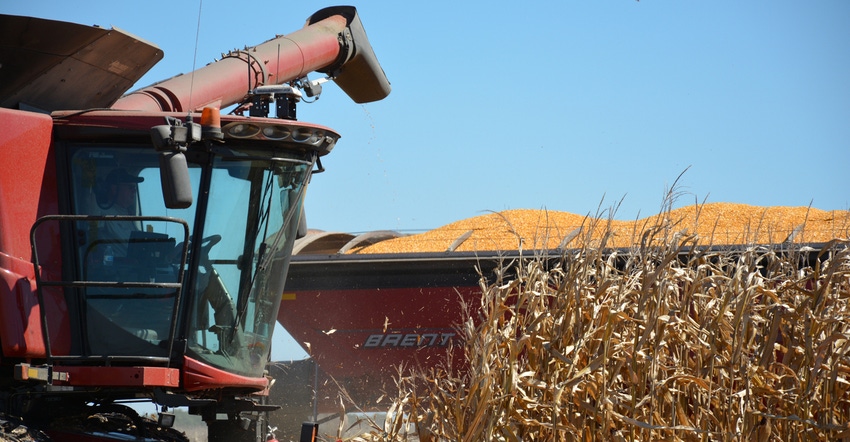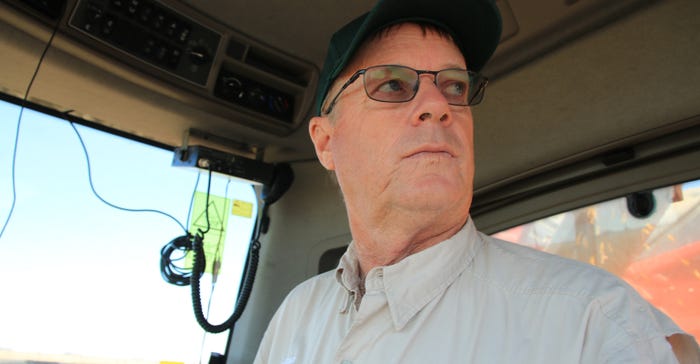
The up-and-coming STAR program for rating conservation efforts on Illinois farmland recently got new backing from Decatur-based Archer Daniels Midland.
As part of the AgWater Challenge that ADM signed on for in October, the company commits to have 25% of the farmers it sources grain from in the surrounding area earn a three-star rating under the STAR, or Saving Tomorrow’s Agriculture Resources, program by 2023.
The statewide STAR survey is run by the Champaign County Soil and Water Conservation District. The survey that is distributed directly to growers takes five minutes to fill out, with 80 farmers from 15 counties participating the first year of the program in 2017.
As farmers pick up more practices such as reduced tillage or cover cropping, they can earn as many as five stars. By 2028, ADM commits to having 25% of its farmers be five-star-rated, and 50% be three-star-rated.
“This obviously isn’t a business-as-usual model, so we want to push for progress,” says Alison Taylor, ADM’s chief sustainability officer. “At the same time, we don’t want to put something out there that’s just not reasonable.”
Taylor says the company worked closely with The Nature Conservancy to come up with a timeline scheduled to end in a decade. By the end of February, she hopes to have 50 ADM-supplying farmers fill out the STAR survey.
“We want to get a baseline understanding of what kind of practices they’re doing right now or measurements they may be doing,” Taylor says, adding that from there, ADM will determine the best practices and incentivize them.
So far, the company has committed to granting the Champaign County Soil and Water Conservation District $30,000 for education and direct support.
“We anticipate there will be monetary support to actually provide seed and the implements of sustainable agriculture after we find in the survey what the best practices are in this area,” Taylor says.
How to get a good rating
Forty miles away in Sadorus, farmer Steve Stierwalt already has a four-star rating on one piece of farmland. To earn the rating, Stierwalt says he uses practices that limit nutrient runoff while increasing soil health.
“One of the purposes behind STAR is to find out what farmers are doing locally. Once you have that, then the conversation gets going on which practices could be added to the mix to give you a better rating,” says Stierwalt, president of the Association of Illinois Soil and Water Conservation Districts.
The Illinois Nutrient Research and Education Council and other research informs the rating of each practice for Stierwalt. On his four-star field, he uses strip tilling equipment following corn and doesn’t till after soybeans. He’s also starting to use cover crops.
Using fertilizer “closer to when it’s needed,” as well as waiting for the ground to thaw before applying phosphorus are two other factors supporting his current rating, Stierwalt says.
“NREC’s research has helped us identify cereal rye following corn as a very good way of keeping nitrates out of surface water. They’ve seen a 40% to 60% reduction in nitrates getting into tile water just with that one practice alone,” he says. “So, we’re trying to learn how we can incorporate winter-hardy cover crops.”
 STRIP TILL: Steve Stierwalt plans to strip till all his recently harvested corn acres.
STRIP TILL: Steve Stierwalt plans to strip till all his recently harvested corn acres.

Field to Market
Like other corporations in the AgWater Challenge, ADM is already a member of Field to Market, a broad industrywide coalition designed to improve sustainability and conservation measures in food production. Taylor says their major commitment through the program involves buying more wheat from growers who track sustainability according to Field to Market’s requirements.
“We’re going to be committing to increasing the acres that are in that program and increasing the number of acres that are using alternative tilling practices,” Taylor says. “We identified something like STAR as something being very complementary to those goals.”
Field to Market has produced volumes of data through the agricultural data curator Agrible. After the first STAR surveys are received by early 2019, Taylor concludes that STAR could make use of the data in deciding the best practices to preserve water quality downstream from ADM.
What are these programs?
Field to Market is an industrywide alliance that began in 2006. Its goal is to unite the supply chain — from field to market — to improve sustainability nationwide. Members include processors, food manufacturers, commodity organizations, universities and retailers (think Walmart and Target). The organization wants to provide tools to measure sustainability for farmers and for the supply chain, and to verify claims.
Field to Market put out a large research package on sustainability progress in its National Indicators Report, broken out by commodity and conservation practice.
AgWater Challenge was launched in 2016 by Ceres and the World Wildlife Fund to encourage better water stewardship among the world’s most influential food and beverage companies. ADM began participating in October 2018, joining eight other companies including Target, Kellogg and Hormel. In joining, ADM commits to protect freshwater resources in its agricultural supply chain. ADM’s specific commitments include:
• sourcing at least 10% of its wheat by 2022 from farmers measuring and monitoring their environmental footprint (through Field to Market)
• putting incentives behind the STAR program
• supporting farmers with education and direct financial support, and grants through local soil and water conservation districts
About the Author(s)
You May Also Like




